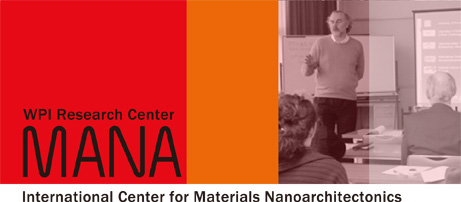Guoping Chen

- Affiliation:
- Tissue Regeneration Materials Unit, Tissue Regeneration Materials Group, MANA, NIMS
- Specialty:
- Biomaterials, Tissue Engineering
- Academic degree:
- Ph.D., Kyoto University
- Recent Publications
- See NIMS Researchers DB
Education & Working History
| 2011 | - | Present | Principal Investigator, Tissue Regeneration Materials Unit, MANA, NIMS |
| 2007 | Group Leader, NIMS | ||
| 2004 | Senior researcher, NIMS | ||
| 2003 | Senior Researcher, National Institute of Advanced Industrial Science and Technology | ||
| 2000 | Researcher, National Institute of Advanced Industrial Science and Technology | ||
| 1998 | Postdoctoral Researcher, National Institute for Advanced Interdisciplinary Research | ||
| 1997 | Postdoctoral Researcher, Nara Institute of Science and Technology | ||
| 1997 | Ph.D., Kyoto University |
Research History
Development of Polymeric Porous Scaffolds for Tissue Engineering and Regenerative Medicine
Scaffolds play an important role in tissue engineering and regenerative medicine to control cell functions and to promote the formation of new tissues and organs. The scaffolds should permit cell adhesion, promote cell proliferation and differentiation, be biocompatible, biodegradable, mechanically strong, and capable of being formed into desired shapes. Scaffolds with controlled porous structures and biomimetic surface properties are developed by using biodegradable synthetic and naturally derived polymers. The porous scaffolds of biodegradable polymers are used for three-dimensional culture of mesenchymal stem cells, chondrocytes and fibroblasts for tissue engineering of cartilage and skin.
Selected Papers
- Surface modification of porous scaffolds with nanothick collagen layer by centrifugation and freeze-drying
- Chen G, Okamura A, Sugiyama K, Wozniak MJ, Kawazoe N, Sato S, Tateishi T
- J Biomed Mater Res B Appl Biomater, 2009; 90B(2): 864-872.
- Chondrogenic differentiation of mesenchymal stem cells in a leakproof collagen sponge
- Chen G, Akahane D, Kawazoe N, Yamamoto K, Tateishi T
- Materials Science & Engineering C, 2008; 28(1): 195-201
- Grid pattern of nano-thick microgel network
- Chen G, Kawazoe N, Fan Y, Ito Y, Tateishi T
- Langmuir, 2007; 23(11): 5864-5867.
- Preparation of a biphasic scaffold for osteochondral tissue engineering
- Chen G, Sato T, Tanaka J, Tateishi T
- Materials Science & Engineering C, 2006; 26(1): 118-123.
- Culturing of skin fibroblasts in a thin PLGA-collagen hybrid mesh
- Chen G, Sato T, Ohgushi H, Ushida T, Tateishi T, Tanaka
- J Biomaterials, 2005; 26(15): 2559-2566
- Tissue engineering of cartilage using a hybrid scaffold of synthetic polymer and collagen
- Chen G, Sato T, Ushida T, Ochiai N, Tateishi T
- Tissue Eng, 2004; 10(3-4): 323-330
- The use of a novel PLGA fiber/collagen composite web as a scaffold for engineering of articular cartilage tissue with adjustable thickness
- Chen G, Sato T, Ushida T, Hirochika R, Shirasaki Y, Ochiai N, Tateishi T
- J Biomed Mater Res A, 2003; 67(4): 1170-1180.
- Scaffold design for tissue engineering
- Chen G, Ushida T, Tateishi T
- Macromol Biosci, 2002; 2(2): 67-77
- Preparation of poly(L-lactic acid) and poly(DL-lactic-co-glycolic acid) foams by use of ice microparticulates
- Chen G, Ushida T, Tateishi T
- Biomaterials, 2001; 22(18): 2563-2567
- Hybrid biomaterials for tissue engineering: A preparative method of PLA or PLGA-collagen hybrid sponge
- Chen G, Ushida T, Tateishi T
- Adv Mater Deerfield, 2000; 12(6): 455-457.


